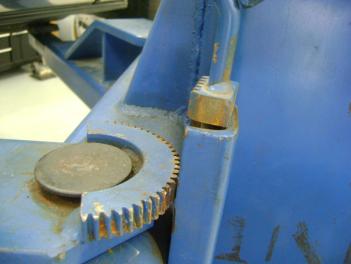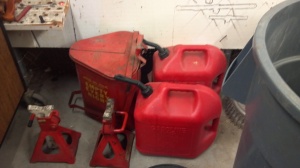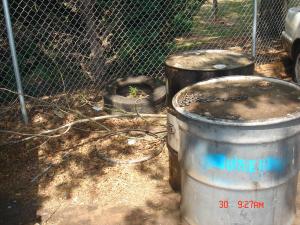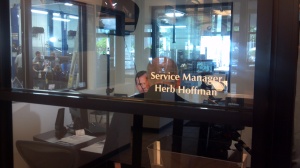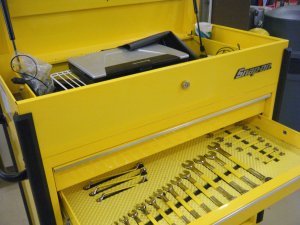The average auto teacher is overworked and under paid. Got your attention! We could spend the rest of the week complaining and debating this statement. I recently toured European schools and the teacher’s number one complaint is the lack of time. (Note: see Dec Blog about time management) Same as here, we do not have time to shift gears or implement new ideas until the summer, winter, or spring break, if we are not completing personal courses of study, working on personal improvement or family experiences during those short times. Our classes are overwhelming in these times of bad economy when everyone that can’t find a job or seeks retraining wants to be a technician of some sort at the Technical College and in our High Schools the rigorous requirements of NCLB impact us in painful ways. It would be a lot easier if no one ever brought up the notion of being industry certified, would it not? What are some of the reasons your program is certified? What are the reasons it is not certified or the certification has lapsed? Let’s look at both sides here and try to be positive, open and realistic in our examination of this controversial subject.
Many times I have presented workshops for teachers to learn the NATEF process only to discover later that nothing changed at their school. Why? Lack of support is often blamed but why would the administration send the teacher to a workshop and then not support them for certification? One of the many items we covered in the workshop was how to apply for the industry certification grants the state provides. I discovered in some cases schools got the grant, spent it and did nothing else. A few never bothered to write the grant. When asked why they admitted procrastination or blamed someone who is now gone. Sometimes Administration would blame the teacher and while in some cases the teacher may be the problem, the teacher says otherwise.
Let’s look objectively at several possible scenarios and examine the cause and effect of the different paths we can take. If we take a positive look at the NATEF process we will discover all the items we see as being negative are a positive improvement for our programs overall health. I can show you that each of the standards used properly will benefit your students, the auto program and make the teachers job easier in the long run. If you have not read the standards I would advise you do so soon. They are located here http://www.natef.org/program.cfm I will be referencing them in this essay.
We can begin our process by developing our advisory or Business and Education Council. I know of no really great program that does not have a viable, dynamic and focused advisory. Sure, it is a pain and a lot of work to develop the relationships, and hours are spent going from place to place meeting new people, organizing and planning the events. See https://autoteacher.net/AYES_Page.php for helps and tips on developing and maintaining the B&E council.
Once you have a working advisory in place then you can share the promotion of your students. You have a source of donations and help when you have needs. Some advisory councils have developed Education Foundations for the program. This gives non-profit status and allows a free flow of donations without the entanglement of school/college rules that hinder fund-raising. After initial start-up two programs I developed were fully funded by donations from the Advisory. A warning sign of a poor advisory is more educators than industry on the council. The worst thing you can do is invite a dealership/owner/service manager to an evening of “Ed speak Presentations.”
See https://autoteachersonny.wordpress.com/2009/11/ for more on Advisory Committees
What does the Advisory do in a well run program? What NATEF Standards do they have input and direction? Std. 2.3 T&E, 6.5, 6.14, 7. 7.5, 8.11 If you allow the stakeholders to work with you on these you will share the burden of implementing the standards.
If we need new tools and equipment and who does not? We can plan a list based on the standards.
NATEF does have a list of hand tools, equipment and special tools that are considered necessary for training. http://www.natef.org/program_standards/auto.cfm I will not bore you with repeating what is written in the document. I will share with you this true story. A career center was planned by a school system. A well-meaning administration got a copy of the tool list and found some tool dealers and sent them the list. The bids were looked at and the lowest bidder picked. The building was built by the system. All the labs were designed alike. The tool bid winner asked for the number of students in a class and sold the school system 24 sets of every hand tool. Can you imagine 24 police grade Mag lights? The lab got offshore brand equipment, can you say not certified safe lifts and substandard special tools? Can you imagine dial indicators that fall apart when used or micrometers that don’t mike? Can you see a multimeter that burns out in a week of student use? Textbooks were ordered off the list from the state without review to see if content was relevant. Trainers that are not transitional trainers are bought at high prices that student learn nothing on except to operate the games. The money ran out before the alignment lift could be ordered. Several key big-ticket items were not purchased. The well-meaning administrator then looked for a teacher via the DOE channels. The teacher they hired had failed as a technician and the system he had worked as a teacher before was glad he moved on. Three years later the program is closed for lack of students. What could have been done different? Could the NATEF standards have prevented this expensive mistake? Consider this scenario.
An administrator is assigned to develop the new auto program. He/She forms a team of teachers, counselors, work based learning coordinators and interested parties. The community auto businesses are surveyed by the team by calling on the dealer principals and shop owners for interviews with them face to face. Community Civic Organizations, Std 2.6 are presented with preliminary plans that ask for local input. The State program specialists are contacted and teacher position is placed on the state and local site. An advisory committee is formed from the survey of local businesses, Std 2.5. By this time the team has set up a chain of command of the interested stakeholders Std 2.2. Std 1.1 and Std 1.2 are being formed by the committee. Std 2.3 has been presented to the system leadership and Std 2.6 and 4.2, 5.6 are on the table for the leadership to act upon. The advisory has formed a team to plan the shop/lab layout with a focus on safety and learning as in Std 2.4. Another team is developing Std. 6.1 with an eye to emerging technology, DOE curriculum and incorporation of Science, Math and Language Arts. The advisory council’s next agenda item is Std 7.2 the selection and recommendations for tool and equipment needs for the program. The safety, Std 7.1 of the learning environment is foremost in all these proceedings. As soon as the building/renovation is complete the teams inspect and report on the new lab and classroom, Std 8.6 should have been addressed in the early plans of the site. During this walk through Std 8.11 is addressed. During this time the selection of an instructor is being done with interviews being held for qualified applicants. Std 9.1 requires ASE certification be current and the instructor continuing with industry recognized update training. Careful consideration with as many stakeholders in the program having input in the selection of a teacher for he/she is the key to an excellent program. After selection the teacher is enrolled in a Teacher Training to prepare a person out of industry for the rigors of the classroom. Now that we are at this point we see that the NATEF standards while minimum, their requirements are the framework a great program can be built upon. Once this basic work outlined here is done we can continue to build upon this foundation and have a truly great program ready for site evaluation in a few school years. All of these suggestions should be considered a continuous process and not a one time agenda item. See for more information A guide to program certification
Now what are your objections? Here are a few common ones. I would love to hear your story if I do not cover it here.
“I don’t have enough time in my school year for the required hours.”
This is a structure problem with a lot of high schools. Consider articulation with a post secondary and only certify your program in two areas. Consider a work based learning co-op program with local businesses for after school mentored training. Consider the General Service Technician Training Program, GST Certification which is according to the instructors I have talked with that are using the GST model works very well for Secondary schools. Consider adding a summer internship class or summer class to add more contact hours. Explore the new Std 11 and step into the 21st Century with your students. If done carefully learning can become constant and time the variable. You can place 25% of your instructional time into the e learning category if you follow the standard.
“I don’t have enough time in the school class period”
Some schools only have 50 minute classes. While this may work in a History class and is fine for teaching Spanish it will not allow for safe and proper delivery of a lab class. A shop/lab teacher with requirements to teach hands on subject matter with a performance based assessment (std 6) can not safely and efficiently do the tasks in a 50 or 45 minute period. Clean up/ Lab set up time eat up effective instructional time. Present a plan to combine periods for your students in these short periods. A 100 minute class will give the organized teacher time to teach and the students can perform in a safe learning environment. The schedule and/or registering requirements of students should not place them in unsafe labs.
“I don’t have enough time (personal) “
If you are in this position and can not find a watch with more than 24 hours on the face then take a step back and examine your day. If you can not organize, plan and develop procedures to do your job with relative comfort, safety and deliver quality instruction then “What is wrong with this picture?” I suggest you join NACAT and create, share and enjoy the fellowship. The networking with the very best auto teachers on the planet will be worth the time and expense of membership. Many times I have needed something for my class an a fellow teacher in another state I would have never met outside of NACAT will share the “Wheel” so I don’t have to reinvent the “Wheel” See www.nacat.org
see for more on this https://autoteachersonny.wordpress.com/2010/01/
“I have no funds/money/budget”
Currently there are several grants out there for auto teachers. Are they going to call you up and deliver the cash? No, are they going to write themselves? No, Do you have to be a skilled grant writer? No, I obtained many grants by asking many more than I got. Were they hard to write? No, some were fill in the blank online and easy, some were difficult and required a team to develop. In a recent work shop I presented at NACAT 2010, an instructor from California shared how she had a grant from a source I quote http://www.grants.gov/ Her school will get $2 million for Hybrid, Alt vehicle study. Another source is to take a Skills USA student to the local civic clubs and have them speak, a 3-5 minute speech on why they are in Skills, or auto and then you talk for a few minutes on your program and the benefits to the community. Then ask for donations! I do know this if you don’t ask you won’t get.
Is the NATEF process perfect? No, nothing with us humans is. We can work together to make a better NATEF. The NATEF staff are certainly focused on helping you. The NATEF President knows what you face each day having been an auto teacher and a technician. No one likes change but wet babies but our industry is changing so fast; only by staying on top can you deliver the technical instruction the new market place requires.
Bottom line is that you can leverage every NATEF Standard to have the type of program that students will demand to be in. Business will support the program because they will see the market place value in the program. Your leaders and school boards can be proud of because of the excellence of the graduates. I have visited many good programs. I have visited many great programs. All the excellent programs were NATEF Certified. The choice is yours. Email me if I can be of service. See for more information https://autoteacher.net/
Sonny Reeves
http://www.linkedin.com/in/autoteachersonny

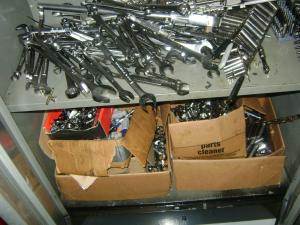 I opened a locker and found these tools. The administrator continually said how good the instructor was. We asked for safety glasses while we were there and the instructor left the room to find some. He never returned before I left.
I opened a locker and found these tools. The administrator continually said how good the instructor was. We asked for safety glasses while we were there and the instructor left the room to find some. He never returned before I left.













